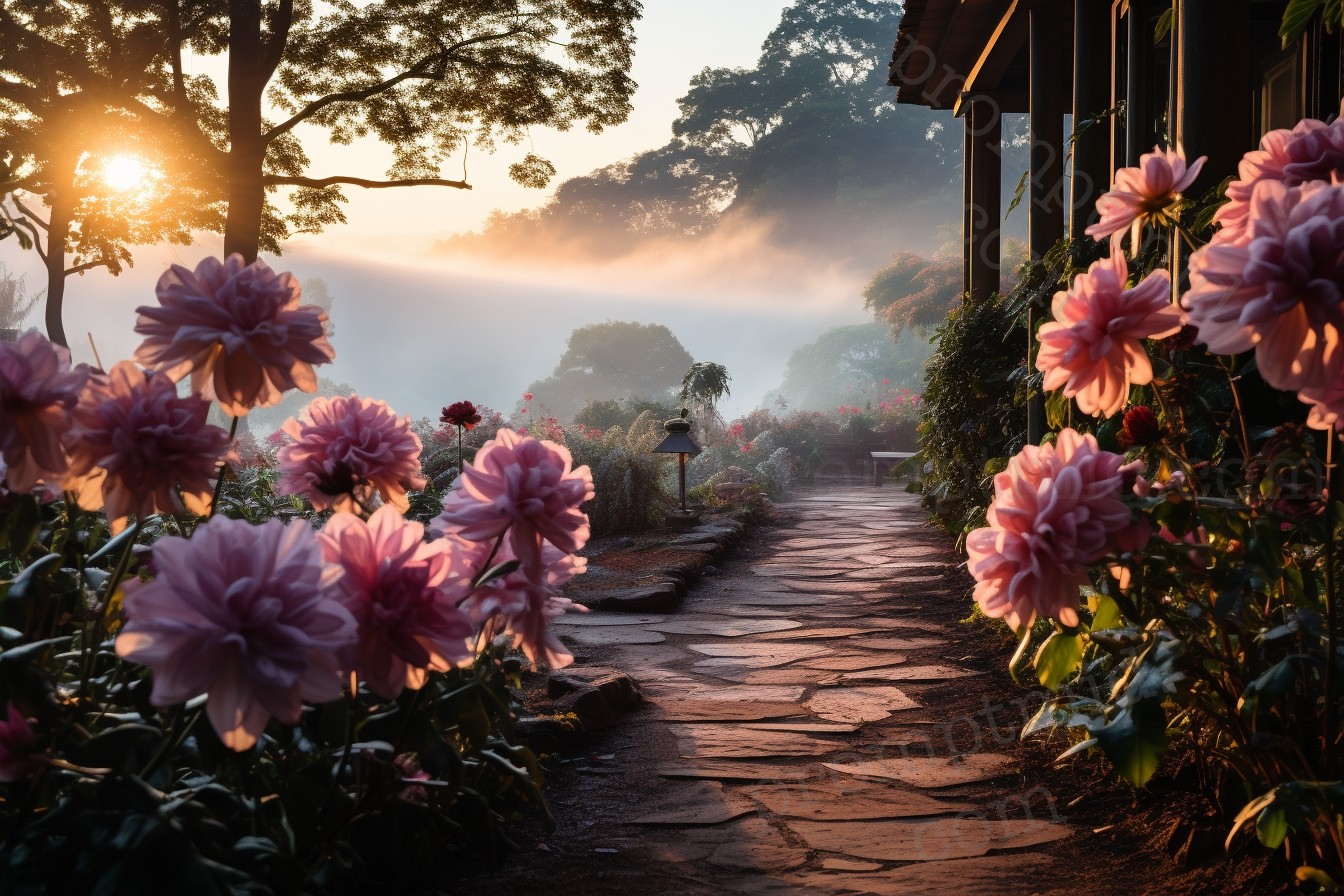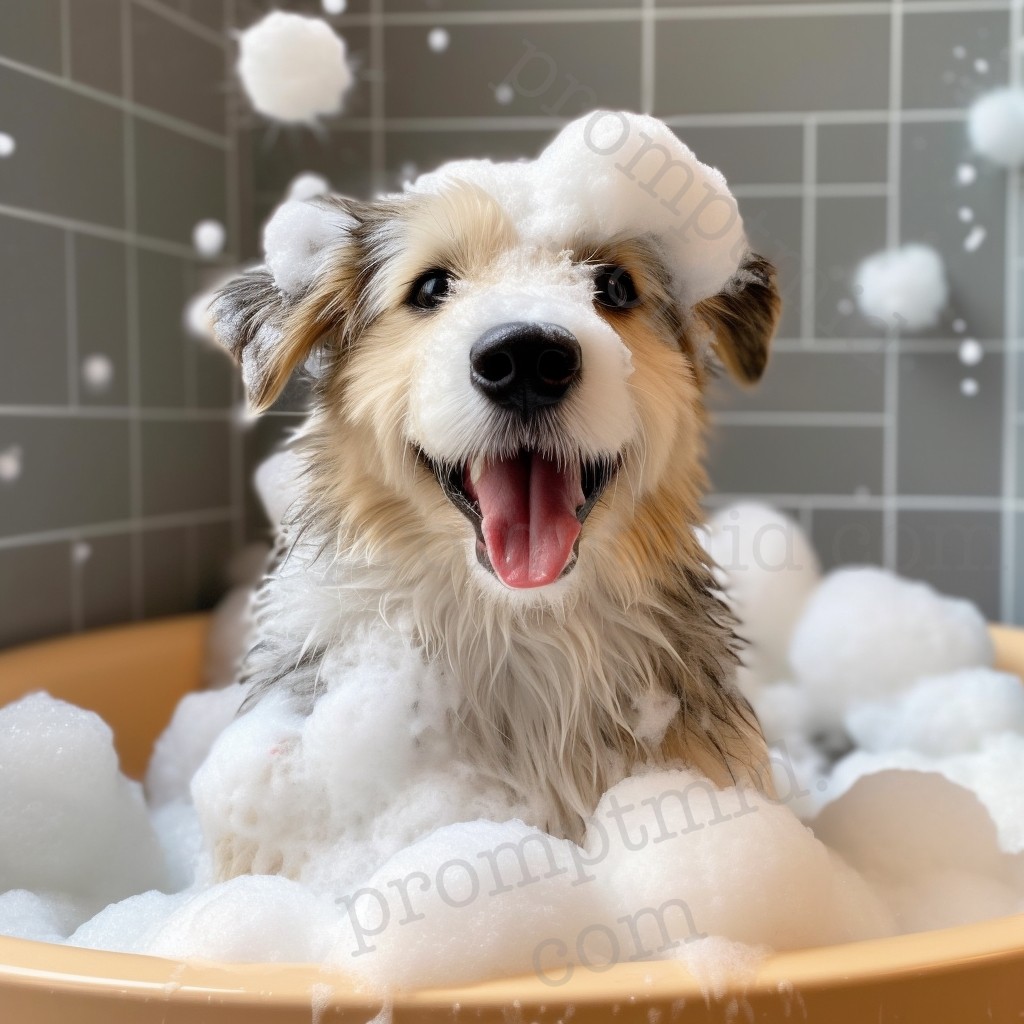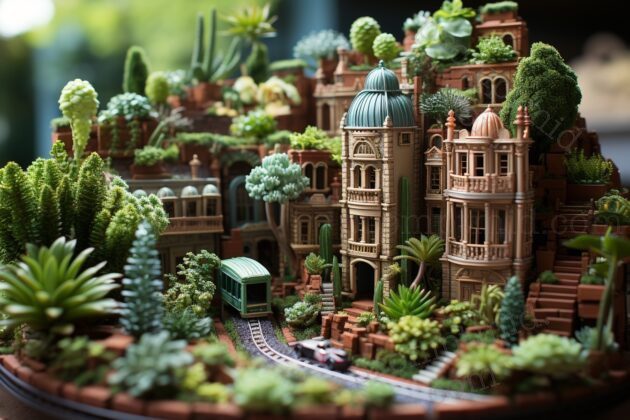The advent of digital technology has revolutionized the field of photography, and one of the most notable developments in this arena is the use of advanced editing software like midjourney. This article delves into how professional photographers can utilize midjourney to enhance their work, pushing the boundaries of creativity and technical excellence.
Overview: utilizing midjourney for professional photo editing
Midjourney stands as a pivotal tool in the modern photography landscape, offering a range of features and capabilities that can transform ordinary images into extraordinary works of art. Its unique set of tools and user-friendly interface makes it an ideal choice for professionals looking to elevate their photography.
Brief introduction to midjourney and its significance in contemporary photography
Midjourney is more than just an editing software; it’s a comprehensive suite that offers extensive control over the photographic editing process. Its significance in contemporary photography lies in its ability to blend traditional editing techniques with cutting-edge digital manipulation, offering photographers a new realm of creative possibilities.
Understanding midjourney and its capabilities
To fully leverage midjourney for professional photography editing, it’s essential to understand its core functions and how they apply to photographic work.
Core Functions of Midjourney Relevant to Photographers
- Advanced Image Editing: Midjourney offers a range of advanced editing tools that go beyond basic adjustments. This includes intricate color correction, exposure adjustments, and retouching capabilities.
- Layer-Based Editing: One of Midjourney’s strengths is its layer-based editing system, which allows for complex compositions and adjustments without permanently altering the original image.
- High-Resolution Output: Midjourney supports high-resolution images, crucial for professional photography, ensuring that the final output retains the quality and detail required for large prints or digital displays.
- Non-Destructive Editing: The software’s non-destructive editing feature ensures that original image data remains intact, allowing photographers to experiment without the risk of losing the original image quality.
Introduction to Unique Editing Tools and Features Available in Midjourney
- Selective Color Control: Midjourney provides sophisticated tools for selective color manipulation, allowing photographers to adjust or replace specific colors in an image without affecting the rest of the photo.
- Advanced Masking and Selection Tools: These tools enable precise selection and masking of various parts of an image, which is essential for detailed editing and compositing.
- Dynamic Range Adjustment: The software offers dynamic tools to adjust the contrast and tonal range of an image, enhancing details in shadows and highlights.
- Artificial Intelligence-Driven Features: Midjourney incorporates AI-driven tools for tasks like object removal, pattern recognition, and even suggesting editing options based on the image content.
- Customizable Presets and Filters: The software includes a variety of customizable presets and filters that can be applied to images for quick adjustments or to achieve a specific look or style.
- Integration with Other Software: Midjourney is designed to integrate seamlessly with other popular photography and graphic design software, enhancing its utility in a professional workflow.
In conclusion, Midjourney offers an expansive array of tools and features that can profoundly enhance the quality and creativity of professional photography. By understanding and effectively utilizing these capabilities, photographers can explore new horizons in image editing, pushing the boundaries of their artistic expression.


Setting Up the Workspace for Photo Editing
Properly setting up the workspace in Midjourney is crucial for efficient and effective photo editing. A well-organized workspace not only speeds up the editing process but also enhances the overall editing experience.
Steps to Configure and Optimize the Workspace in Midjourney
- Customizing the Interface: Tailor the Midjourney interface to suit your workflow. Arrange toolbars, panels, and windows in a way that provides easy access to frequently used tools.
- Screen Calibration: Ensure your monitor is properly calibrated for color accuracy. This is vital for precise color correction and editing.
- Setting Up Shortcuts: Customize keyboard shortcuts to speed up your workflow. Assign shortcuts to your most-used functions and tools.
- Workspace Profiles: Create different workspace profiles for various types of editing tasks. For example, have a separate profile for color correction, retouching, and compositing.
- Choosing the Right Tools and Plugins: Equip your workspace with essential tools and plugins. Select those that enhance your editing capabilities, like advanced color grading tools or noise reduction plugins.
Selecting the Right Tools and Plugins for Photo Editing
- Color Grading Tools: These are essential for adjusting the mood and tone of your images. Look for tools that offer fine control over color hues, saturation, and luminance.
- Retouching Plugins: Choose plugins that aid in efficient retouching, such as skin smoothing, blemish removal, and object cloning.
- Noise Reduction and Sharpening Tools: These are important for enhancing image clarity, especially in low-light conditions.
- File Management Plugins: Organize and manage your image files efficiently with plugins designed for cataloging and batch processing.
Fundamental Editing Techniques in Midjourney
Understanding and mastering the fundamental techniques of photo editing in Midjourney is key to producing high-quality results.
Detailed Guide to Basic Editing Techniques
- Color Correction: This involves adjusting the white balance, color temperature, and tint to ensure colors in your images appear natural and consistent.
- Contrast and Brightness Adjustment: Modify the contrast to add depth and dimension to your images. Adjusting brightness helps in achieving the correct exposure.
- Saturation and Vibrance Control: Use these settings to enhance or mute the colors in your image. Vibrance is particularly useful for adding punch to dull colors without oversaturating the image.
- Exposure Corrections: Correct underexposed or overexposed areas to bring out hidden details in shadows and highlights.
- Cropping and Composition: Crop your images to improve composition or focus on specific subjects. Follow compositional rules like the rule of thirds for better visual appeal.
Examples of Effective Use of These Techniques
- Balancing Shadows and Highlights: Use the shadows/highlights adjustment to recover details in dark or bright areas of an image.
- Color Grading for Mood: Apply color grading to set a specific mood or atmosphere in your image, such as a warm tone for a sunset landscape.
- Selective Color Adjustments: Isolate and adjust specific colors in an image to make certain elements stand out, like enhancing the blue in a sky.
- Sharpening Details: Apply sharpening selectively to areas that need more definition, such as the eyes in a portrait, while keeping other areas soft.
By following these guidelines and practicing these techniques, photographers can fully utilize Midjourney to enhance their images. Each technique offers a way to refine and perfect photographs, turning them into professional-quality works of art.
Advanced Image Processing Techniques
Delving into the realm of advanced image editing unlocks a world of possibilities for photographers. Midjourney, with its suite of sophisticated tools, enables users to push the boundaries of their creativity and technical prowess.
Learning Advanced Techniques such as Retouching, Background Replacement, and Dynamic Composition Alteration
- Expert Retouching: Learn techniques for professional-level skin retouching, blemish removal, and enhancing facial features. Master the use of healing brushes, clone stamp tools, and frequency separation for subtle yet effective retouching.
- Background Replacement: This involves removing the original background of an image and replacing it with a new one. It’s crucial to match the lighting and perspective of the new background with the subject for a seamless blend.
- Dynamic Composition Changes: Understand how to alter the composition of a photo post-capture. This could include extending the background, changing the aspect ratio, or even adding elements to the scene for a more dynamic composition.
- Advanced Layer Blending: Use Midjourney’s layer blending modes to create complex visual effects. Blending modes can be used for tasks like creating double exposures or achieving unique lighting effects.
- HDR (High Dynamic Range) Processing: Learn to merge multiple exposures of the same scene to create images with enhanced dynamic range, bringing out details in both shadows and highlights.
- Panorama Stitching and Editing: Create wide panoramic shots by stitching together multiple images. This technique requires attention to detail in alignment and exposure blending.
Tips for a Creative Approach to Editing and Creating Unique Images
- Experiment with Textures: Add textures to your images to create depth or a vintage feel. This could be subtle grain or more pronounced textures like paper or fabric.
- Color Theory Application: Use color theory to create striking color combinations or to guide the viewer’s eye through the image.
- Creative Compositing: Combine multiple images or elements into a single composition to tell a story or create a surreal scene.
- Use of Filters and Effects: Experiment with artistic filters and effects to transform your images into unique pieces of art. This can range from simple vignette effects to complex digital art transformations.
- Storytelling through Editing: Think of each image as a story. Your editing decisions can emphasize certain elements to convey emotion or narrative.
- Stay Updated with Trends: Keep up with current photography and editing trends to ensure your work remains relevant and fresh.
By mastering these advanced techniques, photographers can significantly elevate the quality of their work. Midjourney offers the tools and flexibility needed to experiment and bring these creative visions to life. Remember, the key to exceptional image processing lies in both the mastery of technical skills and the courage to experiment creatively.


Working with RAW Files and Large Projects
Handling RAW files and managing large photography projects in Midjourney requires a systematic approach to ensure efficiency and quality. RAW files, with their high-quality image data, offer greater flexibility in editing but also demand more from the software and the editor.
Guidelines for Working with RAW Files in Midjourney
- RAW File Handling: Understand how Midjourney interprets RAW files. Familiarize yourself with its RAW processing capabilities, including adjustments for exposure, color balance, and lens corrections.
- Non-Destructive Editing Workflow: Utilize Midjourney’s non-destructive editing features. This ensures that all adjustments made to a RAW file are reversible and the original data is preserved.
- Custom Presets for RAW Processing: Create custom presets for processing RAW files. This can speed up the workflow, especially when dealing with images from the same shoot that require similar adjustments.
- Detail Enhancement in RAW: Take advantage of the high level of detail in RAW files. Use sharpening and noise reduction tools effectively to enhance these details without compromising image quality.
- Color and Tone Adjustments: Make the most of the wide dynamic range and color gamut in RAW files. This allows for more precise and impactful color and tone adjustments.
Managing Large Photo Projects in Midjourney
- File Organization: Organize files efficiently using Midjourney’s library management tools. Categorize images by date, location, project, or other relevant criteria.
- Batch Processing: For large collections, use Midjourney’s batch processing capabilities to apply common adjustments to multiple images at once, saving time and ensuring consistency.
- Version Control: Keep track of different versions of an edit. Midjourney’s version control system can help you compare different edits and revert to previous versions if needed.
- Use of Collections and Albums: Group images into collections or albums for easier management. This is particularly useful for projects with a large number of images.
- Optimizing Workflow for Efficiency: Identify repetitive tasks and find ways to automate them. Utilize keyboard shortcuts and tool presets for faster editing.
- Memory and Storage Management: Ensure your hardware can handle large projects. This includes having sufficient RAM, a powerful processor, and ample storage space. Additionally, optimize Midjourney’s memory usage settings for better performance.
- Regular Backups: Regularly back up your projects, especially when working on large and significant collections, to prevent data loss.
Techniques for Optimizing Workflow for Large Image Collections
- Automated Tagging and Search: Use Midjourney’s tagging and search features to quickly find and organize images.
- Selective Editing: Focus on editing key images in a collection first, then apply similar settings to others where appropriate.
- Collaborative Features: If the project is collaborative, make use of Midjourney’s features that support teamwork, like shared collections and editing logs.
- Progressive Editing: Start with broad adjustments and gradually move to more specific edits. This approach is efficient for ensuring that all images receive a consistent level of attention.
By implementing these practices, photographers can effectively manage large projects and RAW files in Midjourney, ensuring a smooth and productive editing process. This structured approach not only enhances the quality of the final images but also makes the editing process more enjoyable and less overwhelming.


Integration of Midjourney with Other Tools and Platforms
The versatility of Midjourney significantly increases when it is used in conjunction with other software and cloud services. This integration can streamline the workflow, enhance functionality, and open up new creative possibilities.
Recommendations for Using Midjourney in Combination with Other Programs and Cloud Services
- Integration with Photo Management Software: Link Midjourney with photo management tools like Adobe Lightroom or Apple Photos. This allows for seamless import/export of images and efficient organization.
- Collaboration with Cloud Services: Utilize cloud platforms like Google Drive or Dropbox for storing and sharing large files. This integration facilitates easy access to your images from anywhere and simplifies collaborative projects.
- Combining with Graphic Design Software: Use Midjourney alongside graphic design software such as Adobe Photoshop or Illustrator for more complex editing tasks, such as creating composites or adding graphic elements to photographs.
- Linking with Social Media Platforms: Streamline the process of posting images to social media by integrating Midjourney with platforms like Instagram or Facebook. This can often involve resizing and formatting images for optimal web display.
- Use in Tandem with Printing Services: For professional printing, integrate Midjourney with printing service software to ensure that your edits translate well into printed media.
Examples of Effective Integration for Improving Workflow
- Editing to Printing Workflow: Edit images in Midjourney, then seamlessly transfer them to a printing service’s platform for professional prints.
- Cloud-Based Collaboration: Work on a photo project in Midjourney, save edits to a cloud service, and share the project with clients or team members for feedback.
- Social Media Optimization: Quickly format and adjust images in Midjourney before uploading them directly to social media platforms.
Conclusion
Summarizing the Importance of Midjourney for Professional Photo Editing
Midjourney stands as a powerful tool in the arsenal of professional photographers, offering a wide range of editing capabilities and the flexibility to integrate with various other tools and platforms. Its advanced features, combined with user-friendly interfaces, make it an indispensable tool for high-quality photo editing.
Encouraging Readers to Further Explore and Experiment in Photo Processing Using Midjourney
As the landscape of digital photography continues to evolve, Midjourney provides a platform not just for editing but for creative exploration. Photographers are encouraged to delve deeper into the features and capabilities of Midjourney, experimenting with its tools to discover new horizons in photo editing. The possibilities are endless, and with each project, Midjourney offers an opportunity to learn, grow, and refine your skills as a photographer. Embrace the journey of discovery and let Midjourney be your companion in the ever-expanding world of professional photography editing.

